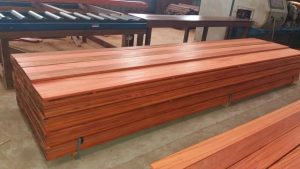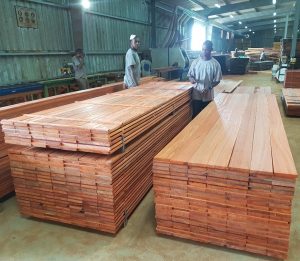BIRCH
About 60 kinds of the Betula genus can be found in Northern forest ares of Asia, Europe and America, only few of these grow in the Northern mountains of India and China. Birch forests in Europe are mostly transformed into veneer and plywood.
Description
| Botanical name: | Betula spp. |
| Overall character: | Fine-pored wood with a generally smooth and silky surface. Birch wood can vary in color; lighter kinds are mostly yellowish to reddish-white, while heavier kinds have light to dark brown (dark reddish brown in some cases) core. |
| Color and structure: | Most kinds have a splint with a pale yellow to reddish-white shade, that can develop a brown color, similar to the heartwood, in old age or when injured. |
| Characteristics/features: | Birch woods have a low natural durability and, unlike alders, are not durable underwater, either. They are listed as a class 5 durability wood pursant to DIN EN 350. |
| Areas of use: | The majority of Birch woods is processed into peeled veneers and then into plywood. However, sliced veneers are also very in demand for the furniture industry. The structural deviations of this wood (such as the appearance of a curly grained or ice birch) give these veneers an aesthetically pleasing appearance that is perfect for furnishing. |
| Sources: | https://www.holzvomfach.de |









